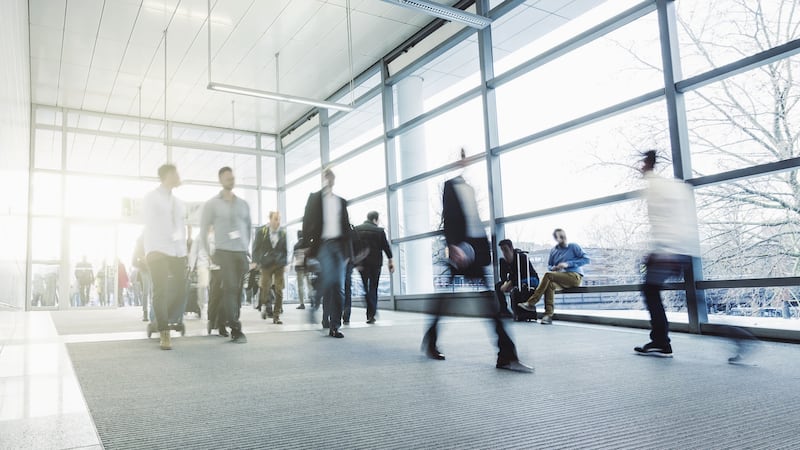Luggage-free airports, shrinkable aircraft seats, stress monitors and light-guided overhead lockers are among the innovations suggested by EU-funded aviation experts and researchers tasked with making air travel better and faster.
The Personalised Airport Systems for Seamless Mobility and Experience (Passme) project has just published details of how it is possible to shave an hour off air travel time while making the airport experience less stressful.
They spent three years developing technologies and innovations which, they say, can significantly reduce door-to-door air travel time.
It was all part of a project set up to investigate how to improve critical bottlenecks in airports and make the journey through airports faster and less stressful.
Passme researchers found that one of the most significant ways to reduce air travel time is to make airports luggage-free zones. Up to 40 minutes can be saved by using luggage transportation services which would see passengers and bags travel separately.
Transporting luggage to the airport, checking it in and then waiting for it at the baggage carousel in the arrival airport all adds to the time and stress of air travel, the report says.
“By simply deploying a courier company to pick up your luggage either at home, hotel or other location and return it to you when you have arrived at your destination, passengers can make significant savings on unwanted time spent at the airport,” the report continues.
The benefits are no check-in bag to carry, no queuing at check in and no waiting at reclaim. From a security point of view, it would also make airports and aircrafts safer. End-to-end baggage transportation services have been adopted by industry and approximately 10 companies worldwide provide this service.
Emirates recently unveiled its Home Check-in service, which allows passengers to check in for their flight and have their checked luggage collected from anywhere in Dubai. American Airlines allows passengers flying from London Heathrow to the United States to have their luggage securely checked-in from any London address.
Another innovation is the Smart Hand Luggage Guiding System which provides automatic light signals in the overhead bins so passengers know if they have put their luggage in space allocated at check-in.

In order to speed up the boarding and disembarking process researchers also came up with seats that can shrink at the touch of a button, doubling the width of the aisle from 16 inches to 32 inches and speeding up journey times by allowing passengers to move easier through cabins during boarding and disembarking.
The extra space would mean two passengers could walk off the airplane side by side. The wider aisles would also be able to fit a wheelchair, improving the experience of passengers with reduced mobility.
“Several airlines have already expressed an interest in this invention,” said Suzanne Hiemstra-van Mastrigt, Passme researcher. “This innovation saves up to 15 minutes. It might not seem like much, but even a few minutes can be crucial for airlines, who might face delays of up to 25 minutes if they miss their time slot for take off,” she added.
The project’s aim was to not only reduce the amount of time spent in the airport, but also to enhance or improve the passenger’s experience while there and it was with that in mind that the Experience Lounge was developed.
Boarding announcements are usually on monitors above passengers’ heads but with more people using smartphones, the Experience Lounge projects airport information onto walls at eye level. These projections also display videos of the natural environment so waiting passengers feels like they are already in the sky.
Meanwhile, a new Passme App and wristband would serve as a combination of personalised device and application, designed to allow passengers to relax and make the best use of their available time at the airport.
Using indoor navigation and up-to-date personalised information from airports and airlines, the app monitors stress levels of passengers and provides notifications about how best to manage stress and arrive at gates on time.
Researchers also found significant unwanted time at the airport could be saved by forecasting the movement of passengers. Using wifi and real time data, they developed the Passme Passenger Demand Forecast, enabling airport operations to predict demand 30 minutes ahead of time.
This would allow airport staff to adapt airport capacity and services, such as staffing, to the anticipated passenger demand at various points, such as security and border control.
"In the next 20 years, worldwide air passenger numbers are expected to double to more than 7.5 billion," said said Passme coordinator Sicco Santema. "Therefore, the Passme innovations will help ensure our airports run smoothly and passengers get to their destinations as quickly and as stress-free as possible."











